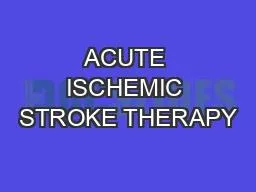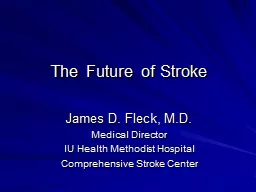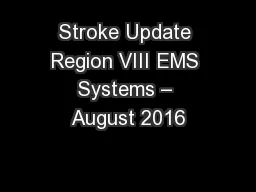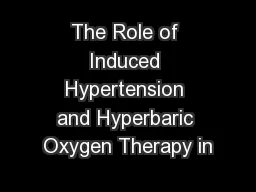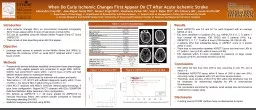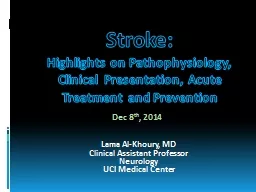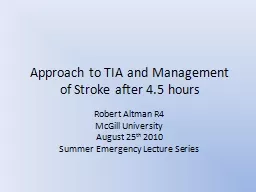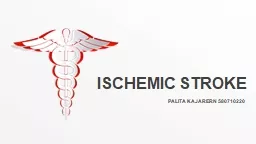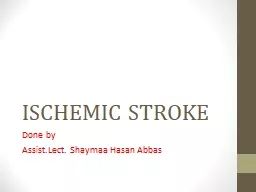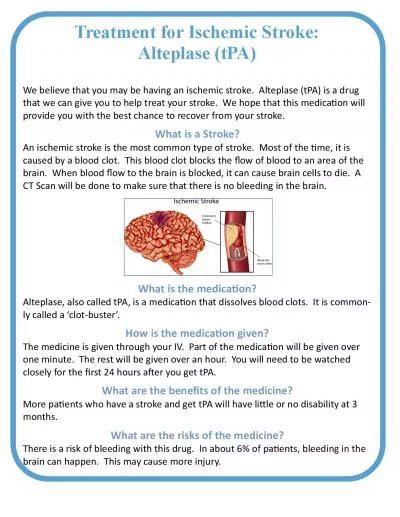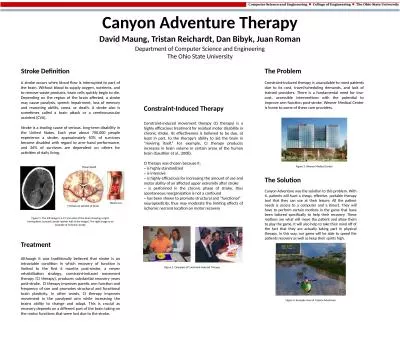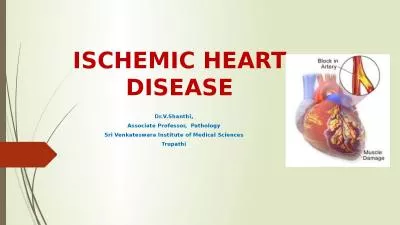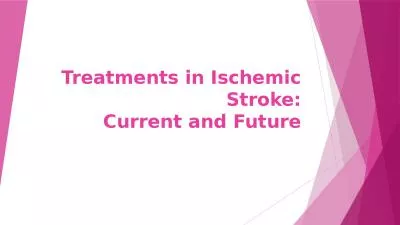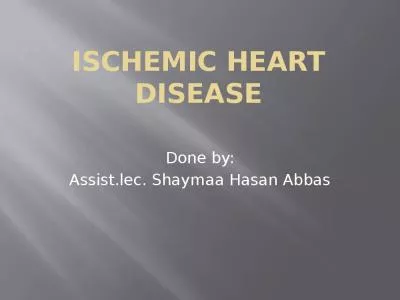PPT-ACUTE ISCHEMIC STROKE THERAPY
Author : frogspyder | Published Date : 2020-08-28
Current Status and Future Directions Tudor G Jovin MD Associate Professor of Neurology and Neurosurgery Director UPMC Stroke Institute Director UPMC Center for
Presentation Embed Code
Download Presentation
Download Presentation The PPT/PDF document "ACUTE ISCHEMIC STROKE THERAPY" is the property of its rightful owner. Permission is granted to download and print the materials on this website for personal, non-commercial use only, and to display it on your personal computer provided you do not modify the materials and that you retain all copyright notices contained in the materials. By downloading content from our website, you accept the terms of this agreement.
ACUTE ISCHEMIC STROKE THERAPY: Transcript
Download Rules Of Document
"ACUTE ISCHEMIC STROKE THERAPY"The content belongs to its owner. You may download and print it for personal use, without modification, and keep all copyright notices. By downloading, you agree to these terms.
Related Documents

